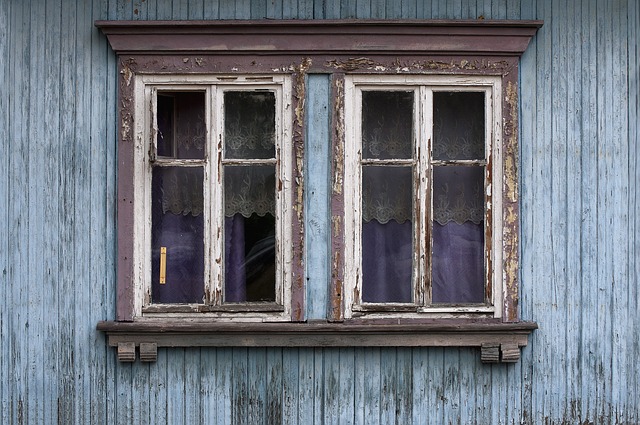Ornamental ironwork for windows, with a centuries-old history, balances artistry and structural strength. Originally used in ancient Greece and Rome, it evolved into grand Victorian balconies and grilles. Modern craftspeople continue this tradition, using traditional techniques to create detailed blueprints and intricate patterns. This blend of art and engineering enhances homes, offering improved security, durability, and beauty. With a range from delicate textures to bold designs, ornamental ironwork complements various architectural styles, ensuring longevity against harsh weather conditions. Today, it's sought after in both historic and modern buildings, providing endless design possibilities for residential and commercial spaces alike.
Ornamental ironwork, a delicate yet robust art form, has adorned buildings for centuries, enhancing architectural beauty while providing structural integrity. This lightweight yet strong metalwork offers both visual interest and practical benefits, particularly for windows. From historic structures to modern designs, understanding the craftsmanship behind it reveals its timeless appeal. Explore the historical perspective, the art of creation, design elements, structural roles, and discover contemporary applications of ornamental ironwork for windows in diverse spaces.
Understanding Ornamental Ironwork for Windows: A Historical Perspective
Ornamental ironwork has been an integral part of architectural design for centuries, and its role in enhancing the aesthetic appeal of windows is particularly noteworthy. Historically, ironwork was not only a functional element but also a symbol of status and craftsmanship. The intricate designs adorning doors and windows reflected the artistic prowess of blacksmiths, who would meticulously forge each piece to create stunning visual effects.
In the context of ornamental ironwork for windows, we see a rich historical narrative. From ancient civilizations like Greece and Rome, where iron was used to depict mythological scenes, to the Victorian era in Europe and America, where elaborate iron balconies and grilles became a hallmark of grand residences. This traditional craft has evolved over time, adapting to changing architectural styles while retaining its capacity to offer both structural support and artistic beauty.
The Art of Crafting Lightweight yet Strong Ironwork
The art of crafting lightweight yet strong ornamental ironwork is a delicate balance between aesthetics and functionality. Skilled artisans meticulously forge each piece, ensuring it not only provides visual interest but also maintains structural integrity. This meticulous process involves several key steps, from initial design to final assembly. Artisans start by creating detailed blueprints, incorporating intricate patterns that enhance the beauty of windows and other architectural features. They then select high-quality iron, carefully heating and shaping it into desired forms using traditional techniques passed down through generations.
The result is a stunning fusion of art and engineering. Lightweight ornamental ironwork not only adds elegance to homes and buildings but also offers enhanced security and durability. Crafted with precision, these designs withstand various weather conditions while maintaining their structural soundness. Whether adorning windows or framing entryways, this type of ironwork becomes an integral part of a building’s character, combining timeless beauty with modern strength.
Design Elements and Visual Appeal: Enhancing Architectural Beauty
Ornamental ironwork, particularly for windows, is a captivating blend of artistry and functionality that transforms architectural spaces. The design elements range from intricate patterns and elaborate motifs to elegant lines and subtle textures—all contributing to a visually stunning effect. Crafted with precision, these ironwork pieces not only enhance the aesthetic appeal but also add structural integrity to buildings, ensuring they stand the test of time.
When incorporated into windows, ornamental ironwork becomes a focal point, drawing attention and inviting viewers to appreciate the intricate details up close. The versatility allows for customization, catering to various architectural styles—from traditional to modern—making it an indispensable element in creating a unique and captivating building facade.
Structural Integrity: Ensuring Safety and Longevity
Ornamental ironwork, though delicate in appearance, is designed to withstand the test of time and extreme conditions. When incorporated into windows or other structural elements, it must maintain strict structural integrity for safety and longevity. This means that each intricately crafted piece is not just an aesthetic enhancement but a vital component of the building’s framework. The use of high-quality iron ensures strength and durability, enabling these ornamental structures to bear weight, resist corrosion, and remain stable in various weather conditions.
In the context of ornamental ironwork for windows, this translates into secure openings that won’t compromise the overall structural soundness of a building. It guarantees that residents can enjoy both the beauty of the craftsmanship and the peace of mind that comes with knowing their windows are safe and sturdy.
Modern Applications: Where to Find and Incorporate Ornamental Ironwork in Your Space
In today’s architectural landscape, ornamental ironwork has found new life in modern applications, offering a blend of aesthetic allure and structural soundness. Beyond its traditional use in grand entrances and historical buildings, ornamental ironwork for windows has become a sought-after feature in contemporary homes and commercial spaces alike. Architects and interior designers are increasingly incorporating this versatile material into designs to add a touch of elegance and unique visual interest.
You can discover stunning examples of modern ornamental ironwork in various settings. For residential properties, consider integrating intricate iron balconies or window grilles that complement the overall design aesthetic. In retail spaces or offices, custom-made metal screens or partitions can serve as both functional art pieces and structural supports. Explore local hardware stores, specialty metal workshops, or online marketplaces to find artisan crafted ornamental ironwork that aligns with your space’s style, whether it’s a minimalist aesthetic or a more ornate vintage vibe.
Ornamental ironwork for windows has evolved from a historical art form to a modern design element, offering both aesthetic appeal and structural integrity. By understanding its unique crafting techniques and historical context, we can appreciate its versatility in contemporary spaces. Incorporating lightweight yet strong ornamental ironwork allows architects and designers to enhance architectural beauty while ensuring safety and longevity. Whether as a historic restoration or a sleek, contemporary addition, ornamental ironwork continues to be a captivating and functional choice for windows and beyond.
